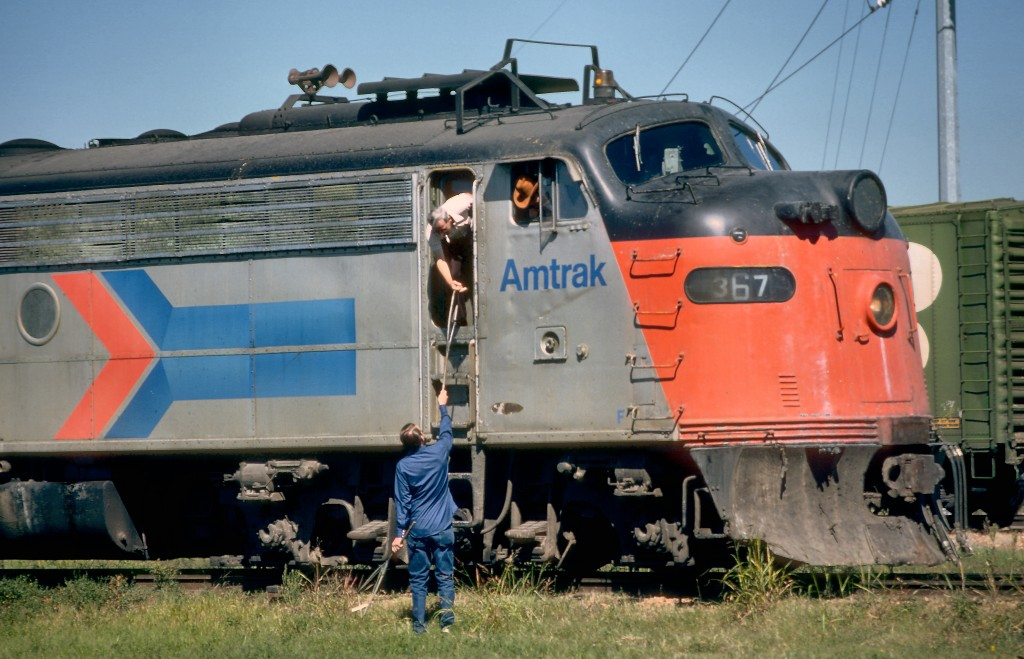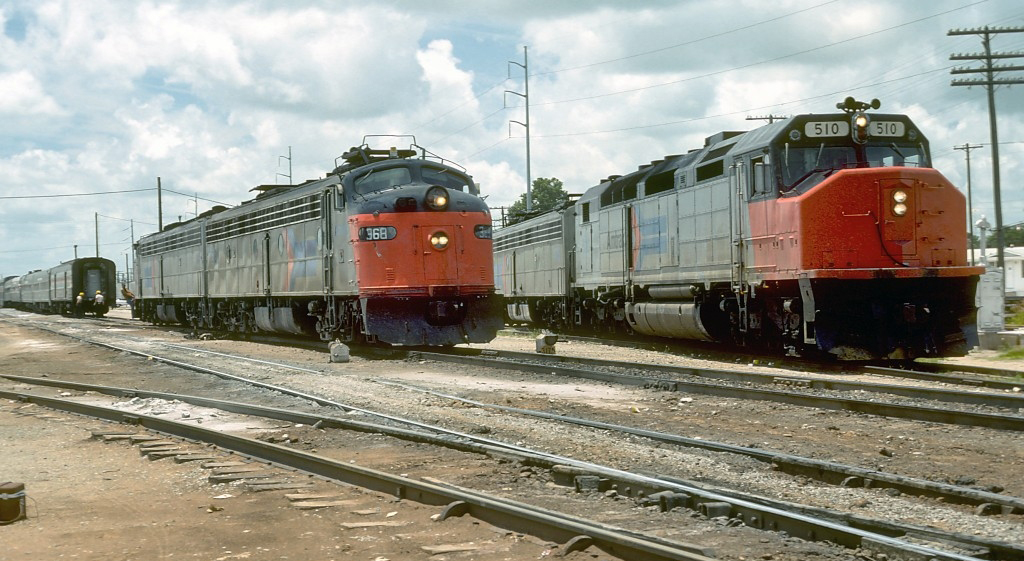Amtrak's "Lone Star" (Train): History, Timetable, Cancellation
Last revised: February 26, 2025
By: Adam Burns
Amtrak's Lone Star was a notable passenger train that carved a unique path through the heart of America, providing essential service from Chicago to Houston.
Introduced on May 19, 1974, and originally designated as the Texas Chief, the train connected the Midwest with the Southwest, passing through a range of diverse landscapes and vibrant communities.
The Lone Star's route spanned approximately 1,368 miles and included significant stops in cities such as Kansas City, Oklahoma City, Fort Worth, and Dallas.
It played a critical role in linking these urban centers, fostering economic growth, and enhancing accessibility for travelers. The train's name, reflecting the iconic Texan symbol, evoked a sense of regional pride and the spirit of exploration.
One of the key features of the train was its variety of passenger amenities, designed to ensure a comfortable journey - a time before Amtrak began serious cost-cutting measures.
It offered coach seating, sleeping accommodations, a sleeper observation, a full dining car, and even checked baggage, providing passengers with various options to suit their travel needs and preferences.
This blend of services made the Lone Star a popular choice for both long-distance travelers and those journeying between intermediate stops.
Despite its popularity, the train faced challenges related to Amtrak's broader operational and financial landscape. In a cost-cutting move, Amtrak discontinued the Lone Star on October 8, 1979, amid a wave of service reductions that impacted numerous routes across the country.
 Amtrak E9A #367 has just departed the former Santa Fe station at Fort Worth with the "Lone Star" as the crew receives orders at Tower 55 in October, 1976. Gary Morris photo.
Amtrak E9A #367 has just departed the former Santa Fe station at Fort Worth with the "Lone Star" as the crew receives orders at Tower 55 in October, 1976. Gary Morris photo.Service History
The Atchison, Topeka & Santa Fe (Santa Fe) introduced the Texas Chief on April 3, 1948, providing service between Chicago and Galveston, Texas via Kansas City, Wichita, Oklahoma City, Fort Worth, and Houston. The route was shortened to terminate in Houston as of early 1967.
The Santa Fe spared no expense to ensure its Chief services provided the very best for its traveling passengers. Designed to offer luxury and speed, the Texas Chief featured modern amenities and streamlined locomotives, representing the pinnacle of mid-20th-century rail travel.
The Texas Chief quickly became synonymous with luxury and speed, providing a crucial link between the Midwest and the Gulf Coast.
The train featured streamlined stainless steel cars, which included sleepers, coaches, diners, and lounges. These cars were equipped with air conditioning, spacious seating, and large windows that offered scenic views of the American heartland and Texas landscapes.
One of the defining characteristics of the Texas Chief was its punctuality and efficiency. It covered the 1,410-mile route in approximately 26 hours and 15 minutes, a remarkable feat for the time. The train's schedule included stops at key cities such as Kansas City, Fort Worth, and Houston, making it a vital transportation link for business and leisure travelers alike.
In 1971, the Texas Chief was conveyed to Amtrak at the inception of the national passenger rail service. Right from the start, the new carrier struggled to maintain the rigid scheduling and first-class services demanded under the Santa Fe.
As a result on May 19, 1974, Amtrak renamed the train as the Lone Star after the Santa Fe objected to Amtrak's use of the "Chief" name, arguing Amtrak's service did not meet its standards.
The train was particularly popular among students of several universities along its route, including the University of Kansas, University of Missouri-Kansas City, Wichita State University, and the University of Oklahoma, offering economical transportation to and from school. In fiscal year 1976, the Lone Star transported 274,448 passengers.
Amtrak contemplated, but ultimately rejected, a direct routing through Dallas due to concerns regarding Dallas Union Station. Instead, on July 1, 1975, Amtrak added a Fort Worth–Dallas section.
The Dallas through cars were temporarily discontinued from October 1976 to February 15, 1977, during which time the Lone Star was combined with the Chicago–Los Angeles Southwest Limited—the successor of another Santa Fe mainstay, the Super Chief—between Chicago and Kansas City.
Timetable (May 19, 1976)
| Read Down (Train 15) | Milepost | Station | Read Up (Train 16) |
|---|---|---|---|
| 5:00 pm (Dp) | 0 | Chicago, IL (Union Station) (CDT) | 12:45 pm (Ar) |
| 5 53 pm | 38 | Joliet | 11:35 am |
| 6:48 pm | 90 | Streator | 10:45 am |
| 7:14 pm | 130 | Chillicothe (AT&SF Station) | 10:05 am |
| 8:00 pm | 178 | Galesburg, IL (AT&SF Station) | 9:15 am |
| 9:00 pm | 233 | Fort Madison, IA | 8:02 am |
| 10:23 pm | 313 | La Plata, MO | 7:05 am |
| 10:53 pm | 347 | Marceline | 6:35 am |
| 11:45 pm | 380 | Carrollton | 6:05 am |
| 12:45 am (Ar) | 450 | Kansas City, MO | 4:50 am (Dp) |
| 1:00 am (Dp) | 450 | Kansas City, MO | 4:35 am (Ar) |
| 1:46 am | 490 | Lawrence, KS | 3:40 am |
| 2:25 am | 516 | Topeka | 3:00 am |
| 3:19 am | 550 | Emporia | 2:02 am |
| 4:50 am | 650 | Newton | 12:45 am |
| 5:30 am | 677 | Wichita | 11:50 pm |
| 6:40 am | 728 | Arkansas City, KS | 10:45 pm |
| 7:22 am | 753 | Ponca City, OK | 10:09 pm |
| 7:58 am | 786 | Perry | 9:40 pm |
| 8:15 am | 802 | Guthrie | 9:11 pm |
| 9:15 am (Ar) | 848 | Oklahoma City | 8:40 pm (Dp) |
| 9:25 am (Dp) | 848 | Oklahoma City | 8:30 pm (Ar) |
| 9:55 am | 866 | Norman | 8:00 pm |
| 10:25 am | 903 | Purcell | 7:30 pm |
| 11:05 am | 948 | Pauls Valley | 6:52 pm |
| 11:48 am | 983 | Ardmore, OK | 6:15 pm |
| 12:36 pm | 1049 | Gainesville, TX | 5:30 pm |
| 1:55 pm (Ar) | 1052 | Fort Worth, TX | 4:10 pm (Dp) |
| 2:10 pm (Dp) | 1052 | Fort Worth, TX | 3:55 pm (Ar) |
| 2:50 pm | 1095 | Cleburne | 3:50 pm |
| 4:01 pm | 1155 | McGregor (Waco) | 2:37 pm |
| 4:28 pm (Ar) | 1180 | Temple | 1:42 pm (Dp) |
| 4:38 pm (Dp) | 1180 | Temple | 1:37 pm (Ar) |
| 6:18 pm (Ar) | 1272 | Brenham | 12:01 pm (Dp) |
| 8:45 pm (Ar) | 1368 | Houston (AT&SF Station) (CDT) | 9:50 am (Dp) |
 A power change for Amtrak's "Lone Star" was photographed here by Gary Morris at Cleburne, Texas in June, 1976.
A power change for Amtrak's "Lone Star" was photographed here by Gary Morris at Cleburne, Texas in June, 1976.Cancellation
As a result of budget cuts mandated by Congress through the Amtrak Reorganization Act of 1979—initiated by the U.S. Department of Transportation under the Carter administration—the Lone Star was discontinued on October 8, 1979.
This left Oklahoma without passenger train service until 1999. To maintain service between Chicago and Houston, a Houston section was added to the Chicago–Laredo Inter-American, splitting at Temple.
At the time of its discontinuation, the Lone Star was Amtrak's seventh most popular long-distance train. The Houston section remained operational until 1981, when the Inter-American was curtailed to San Antonio and subsequently renamed the Eagle.
Recent Articles
-
Oregon Railroad Museums: A Complete Guide
Apr 25, 25 03:11 PM
With its rich tapestry of scenic landscapes and profound historical significance, Oregon possesses several railroad museums that offer insights into the state’s transportation heritage. -
North Carolina Railroad Museums: A Complete Guide
Apr 25, 25 02:56 PM
Today, several museums in North Caorlina preserve its illustrious past, offering visitors a glimpse into the world of railroads with artifacts, model trains, and historic locomotives. -
New Jersey Railroad Museums: A Complete Guide
Apr 25, 25 11:48 AM
New Jersey offers a fascinating glimpse into its railroad legacy through its well-preserved museums found throughout the state.

